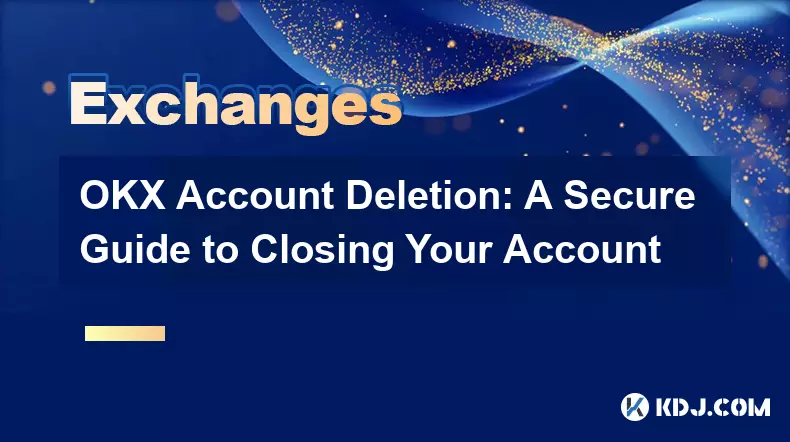-
 bitcoin
bitcoin $99177.955738 USD
-7.32% -
 ethereum
ethereum $3187.183061 USD
-12.38% -
 tether
tether $0.999809 USD
0.00% -
 xrp
xrp $2.117933 USD
-9.42% -
 bnb
bnb $906.710033 USD
-9.17% -
 solana
solana $149.367737 USD
-10.74% -
 usd-coin
usd-coin $0.999816 USD
0.01% -
 tron
tron $0.281498 USD
-0.38% -
 dogecoin
dogecoin $0.156292 USD
-8.00% -
 cardano
cardano $0.500744 USD
-10.19% -
 hyperliquid
hyperliquid $38.087358 USD
-4.58% -
 chainlink
chainlink $14.097831 USD
-8.54% -
 bitcoin-cash
bitcoin-cash $463.329916 USD
-9.22% -
 ethena-usde
ethena-usde $0.999078 USD
-0.01% -
 unus-sed-leo
unus-sed-leo $9.475862 USD
-0.79%
How to Secure Your Coinbase Account When Traveling: A Practical Guide.
Traveling with a Coinbase account poses risks like unsecured Wi-Fi, SIM swaps, and geo-blocks—enable authenticator apps, use a VPN, and store backup codes securely.
Nov 05, 2025 at 08:39 am

Understanding the Risks of Traveling with a Coinbase Account
1. When traveling across borders, users expose their Coinbase accounts to unfamiliar networks and public Wi-Fi systems. These connections are often unsecured, making it easier for hackers to intercept login credentials or session data.
2. Geolocation changes can trigger security alerts or temporary account lockouts. Coinbase’s fraud detection system may flag logins from new countries as suspicious, especially if two-factor authentication (2FA) isn’t properly configured.
3. Physical theft of devices such as smartphones or laptops increases during travel. If these devices have active Coinbase sessions or saved passwords, unauthorized access becomes a real threat.
4. SIM swapping attacks are more likely when roaming internationally. Fraudsters may exploit carrier weaknesses to hijack phone numbers used for 2FA, bypassing SMS-based verification.
5. Local regulations in some countries restrict cryptocurrency exchanges. Accessing Coinbase from a banned jurisdiction could lead to IP blocking or compliance-related freezes.
Enable Advanced Security Features Before Departure
1. Replace SMS-based two-factor authentication with an authenticator app like Google Authenticator or Authy. This prevents reliance on cellular networks vulnerable to interception or SIM swaps.
2. Set up backup codes and store them in multiple secure locations—such as an encrypted USB drive and a trusted cloud vault. These codes are essential if primary 2FA methods fail abroad.
3. Activate biometric login options on your mobile device. Fingerprint or facial recognition adds a layer of protection even if someone gains physical access to your phone.
4. Whitelist known devices within your Coinbase settings. Disable access from unrecognized devices automatically and review active sessions before departure.
5. Turn on email and push notifications for all account activities. Immediate alerts help detect unauthorized attempts quickly, allowing faster response times while overseas.
Maintaining Safe Access While Abroad
1. Always use a reputable virtual private network (VPN) when connecting to public Wi-Fi. A reliable VPN encrypts internet traffic, shielding sensitive data from eavesdroppers at airports or cafes.
2. Avoid logging into Coinbase on shared or public computers. Even briefly accessing your account on a hotel business center machine can leave traces that compromise security.
3. Regularly check your account activity dashboard for unfamiliar logins or transaction attempts. Unrecognized IPs or timestamps should prompt immediate action, including logout and password reset.
4. Carry a secondary smartphone dedicated solely to crypto access. Keep this device isolated from personal apps and social media to minimize attack surface.
5. Use hardware wallets in conjunction with Coinbase for fund storage. Withdraw significant holdings to offline wallets before travel, reducing exposure even if account access is compromised.
Handling Emergencies and Unauthorized Access
1. If you suspect a breach, immediately log out of all sessions via the security settings page and change your password using a secure connection.
2. Contact Coinbase support through official channels only. Beware of phishing sites mimicking customer service portals during urgent situations.
3. Freeze trading permissions temporarily if recovery steps take time. This prevents withdrawals or transfers while you regain control.
4. Document every step taken during the incident, including timestamps and communication records. This information may be required for identity verification or dispute resolution.
5. Re-evaluate your security setup upon returning home. Update passwords, re-scan devices for malware, and confirm no lingering vulnerabilities remain.
Frequently Asked Questions
Can I use Coinbase in countries where crypto is restricted?Accessing Coinbase from restricted jurisdictions may result in IP blocks or account limitations. Using a VPN does not guarantee compliance with local laws and could violate Coinbase’s terms of service.
What should I do if my phone with 2FA gets stolen?Immediately revoke device access through another authenticated session. Use backup codes to log in and disable the lost device’s authorization. Switch to a new 2FA method as soon as possible.
Is it safe to link a debit card to Coinbase while traveling?Linking payment methods carries inherent risk, especially over public networks. Complete this action before departure on a trusted network and monitor for unexpected charges.
How often should I update my Coinbase password when abroad?Frequent changes aren’t necessary if strong security measures are active. However, any suspicion of compromise warrants an immediate update using a secure and verified connection.
Disclaimer:info@kdj.com
The information provided is not trading advice. kdj.com does not assume any responsibility for any investments made based on the information provided in this article. Cryptocurrencies are highly volatile and it is highly recommended that you invest with caution after thorough research!
If you believe that the content used on this website infringes your copyright, please contact us immediately (info@kdj.com) and we will delete it promptly.
- Token Security, Startups, and 2025: A New Era of AI Security
- 2025-11-05 23:00:01
- Crypto Cloud Mining: Trustworthy Sites and Trends to Watch in 2025
- 2025-11-05 23:05:01
- AI-Powered Ascent: S&P 500 Valuations in the Age of Artificial Intelligence
- 2025-11-05 22:50:02
- Nebius, Token Factory, and AI Inference: A New Era of Open-Source AI?
- 2025-11-05 23:10:02
- Cloud Mining in 2025: Platforms, Crypto Earnings, and What to Expect
- 2025-11-05 23:10:02
- Bitcoin Hyper: The Layer-2 Solution Whales Are Pouncing On Amidst Market Dips
- 2025-11-05 23:10:02
Related knowledge

Common Mistakes to Avoid on OKX: A Guide for New Traders
Nov 04,2025 at 03:37pm
Understanding the Interface Before Trading1. New traders often jump into placing orders without fully exploring the OKX platform layout. Taking time t...

OKX TradingView Integration: A Guide to Advanced Chart Analysis
Nov 02,2025 at 03:37am
OKX and TradingView: Bridging the Gap for Professional Traders1. OKX, one of the leading cryptocurrency exchanges, has integrated with TradingView to ...

Finding Your OKX Deposit Address: A Quick and Safe Guide
Nov 05,2025 at 01:15pm
Finding Your OKX Deposit Address: A Step-by-Step Process1. Log into your OKX account using your registered credentials. Ensure you are accessing the o...

OKX Savings Guide: A Low-Risk Strategy for Earning Crypto
Nov 05,2025 at 06:55am
Understanding OKX Savings and Its Role in Crypto Earnings1. OKX Savings offers users a straightforward method to earn passive income by leveraging idl...

OKX Account Deletion: A Secure Guide to Closing Your Account
Nov 05,2025 at 08:44am
Understanding the Implications of Account Closure1. Closing your OKX account permanently removes access to all associated trading features, including ...

Mastering the OKX Mobile App: Tips for Trading on the Go
Nov 05,2025 at 01:19am
Streamlined Navigation for Efficient Trading1. The OKX mobile app features a clean and intuitive interface that allows traders to access key functions...

Common Mistakes to Avoid on OKX: A Guide for New Traders
Nov 04,2025 at 03:37pm
Understanding the Interface Before Trading1. New traders often jump into placing orders without fully exploring the OKX platform layout. Taking time t...

OKX TradingView Integration: A Guide to Advanced Chart Analysis
Nov 02,2025 at 03:37am
OKX and TradingView: Bridging the Gap for Professional Traders1. OKX, one of the leading cryptocurrency exchanges, has integrated with TradingView to ...

Finding Your OKX Deposit Address: A Quick and Safe Guide
Nov 05,2025 at 01:15pm
Finding Your OKX Deposit Address: A Step-by-Step Process1. Log into your OKX account using your registered credentials. Ensure you are accessing the o...

OKX Savings Guide: A Low-Risk Strategy for Earning Crypto
Nov 05,2025 at 06:55am
Understanding OKX Savings and Its Role in Crypto Earnings1. OKX Savings offers users a straightforward method to earn passive income by leveraging idl...

OKX Account Deletion: A Secure Guide to Closing Your Account
Nov 05,2025 at 08:44am
Understanding the Implications of Account Closure1. Closing your OKX account permanently removes access to all associated trading features, including ...

Mastering the OKX Mobile App: Tips for Trading on the Go
Nov 05,2025 at 01:19am
Streamlined Navigation for Efficient Trading1. The OKX mobile app features a clean and intuitive interface that allows traders to access key functions...
See all articles










































































